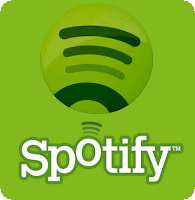Let's face it. As drummers, we rarely have the ability to practice for hours on end. So when we are afforded the opportunity to hit those skins, we have to make the most of it. Quite honestly, I would rather practice an hour a day for five to six days a week, than three hours every three days, but hey, that's just me.
So if you have an hour of practice time. How do you make the most of it and still enjoy what your doing?
Well, I found the answer lies in breaking apart your practice routine. This is how I roll (get the pun).
Module 1:
1 Hour of Available Practice (20 minute milestones):
First 20: play along to music that is outside your comfort range. I am a fan of using
Spotify,
MOG,
Slacker, or any other Internet based radio station. I choose a channel, say Jazz, and play along.
Second 20: break out the study materials. You can work on your sight reading, Latin rhythms, independence, or anything else that "challenges" your skill set.
Final 20: free play. You should always have some free time in your practice routine. Again, I go to
Spotify,
MOG,
Slacker, or any other Internet based radio station and jam along to the channel, playlist, tracks, or album of my choice.
Module 2:
1 Hour of Available Practice (more in depth study time):
First 15: play along to music that is outside your comfort range. Same rules as module one, but for only 15 minutes.
Middle 30: break out the study materials. Again, same as module one, but you will be devoting more time, about ten minutes, to more in depth rehearsal that challenges your skills.
Final 15: free play. Remember, you should always have some free time in your practice routine. Again I go to
Spotify,
MOG,
Slacker, or any other Internet based radio station and jam along to the station of my choice.
Module 3:
1 Hour of Available Practice (10 minute style challenge):
This practice routine is designed to challenge your ability to play multiple styles. Again I use
Spotify,
MOG,
Slacker, or any other Internet based radio station, and switch the station every ten minutes. For example: country for ten minutes, jazz for ten, rock for ten, pop for ten, funk for ten, and rap for ten. The goal is to move quickly between channels so you can get used to playing in any style "on the fly".
Feel free to use different modules different days of the week, or even make up your own. I find when you break apart your routine, you can accomplish much more in your practice time and really enjoy what you are doing. So drum on and let me know how this works for you.
P.S. This works for any instrumentalist, by the way.



